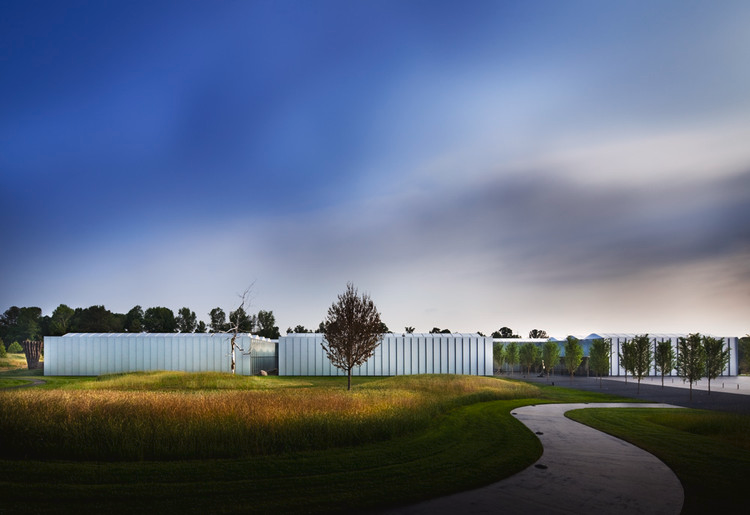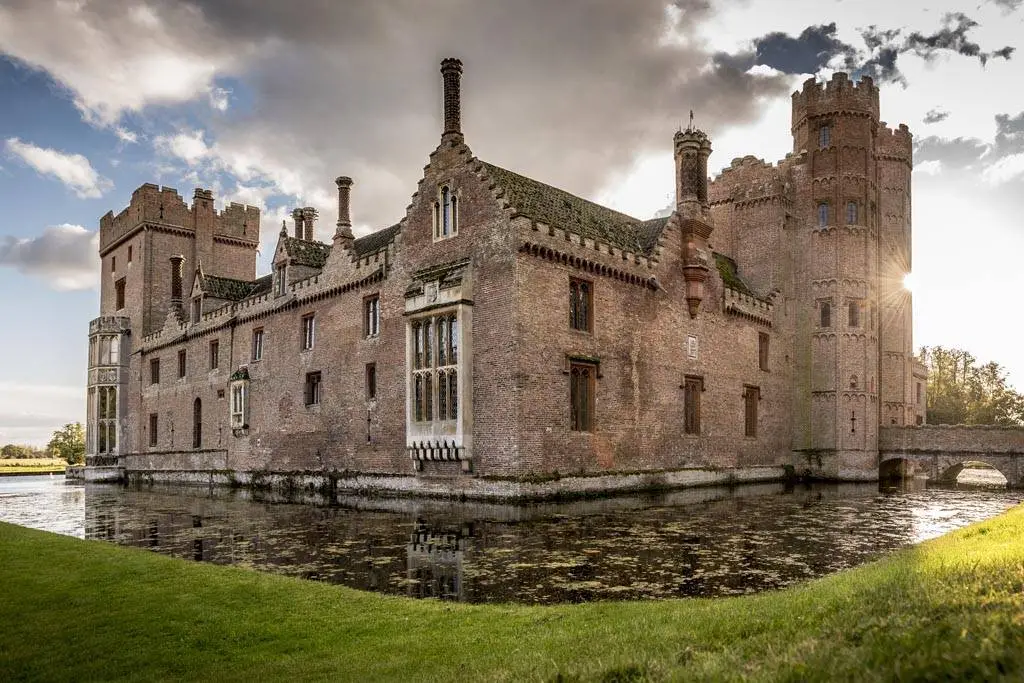Nicknamed “City of Medicine” and “Bull City,” Durham is a vibrant hub in North Carolina’s Research Triangle region. Once a successful tobacco and textile town, Durham has reinvented itself as a diverse center of culture, technology, and cuisine.
| Attraction | Description |
|---|---|
| Duke Chapel | Gothic cathedral-style church at Duke University with a 210-foot bell tower and a 5,000-pipe organ. |
| Sarah P. Duke Gardens | 55-acre public gardens with diverse botanical collections and themed areas like the Asiatic Arboretum. |
| Durham Bulls Athletic Park | Home of the Durham Bulls minor league baseball team, offering games with fireworks and theme nights. |
| Museum of Life and Science | Hands-on science exhibits, nature trails, play areas, and a butterfly house. |
| North Carolina Museum of Art | Art museum featuring a vast collection spanning 5,000 years and hosting major exhibitions. |
| Historic Stagville | A 900-acre plantation site with 18th- and 19th-century buildings, offering insights into the history of slavery. |
| Nasher Museum of Art | University art museum with over 14,000 works, from Renaissance to contemporary art. |
| Morehead Planetarium & Science Center | Large planetarium with immersive space programming and interactive STEM exhibits. |
| Duke Lemur Center | Research facility for endangered lemurs, offering guided tours to observe these primates. |
| Carolina Theatre | Renovated historic cinema and performing arts venue with diverse shows and tours of its ornate architecture. |
| Bennett Place State Historic Site | Historic site of the final major Confederate surrender in the Civil War, with tours and reenactments. |
Visitors will find plenty of interesting attractions to explore in Durham’s revitalized downtown, historic neighborhoods, and on the campuses of Duke University and North Carolina Central University. Here are 12 of the top attractions that make Durham an exciting destination to visit.
Duke Chapel

Name and Location: Duke Chapel, Duke University Campus, Durham, NC
History and Significance: Iconic Gothic cathedral at the heart of Duke’s campus, completed in 1935. Home to a 5,000-pipe organ.
What to Expect: Striking Gothic architecture, stunning stained glass, organ concerts and services, tower access for views.
Visitor Information: Free to visit. Open weekdays 10-8, weekends noon-8. Modest dress required.
One of Durham’s architectural landmarks is Duke University Chapel, a stunning Gothic cathedral-style church. Built from 1930 to 1935, the chapel features striking elements like carved stonework, colorful stained glass windows, and a 210-foot bell tower.
The airy interior can hold nearly 2,000 and contains a 5,000-pipe organ. Visitors can participate in an interdenominational Sunday service, attend a concert performance, or simply walk through the open chapel on weekdays. The expansive grounds also contain beautiful gardens to stroll.
Sarah P. Duke Gardens

Name and Location: Sarah P. Duke Gardens, Duke University, Durham, NC
History and Significance: Iconic 55-acre public garden established in the 1930s on Duke’s campus. Features varied botanical collections.
What to Expect: Strolling paths, terraces, floral walks, water features, sculpture. Seasonal blooms and events.
Visitor Information: Free general admission. Open daily from 8am-dusk.
Adjacent to Duke Chapel are the stunning Sarah P. Duke Gardens, 55 acres of splendid public gardens open daily. There are many areas to explore like the Terrace Gardens with enchanting seasonal displays, stone walls, and water features.
The Asiatic Arboretum showcases Asian horticulture with a tea house overlooking a pond. The Blomquist Garden of Native Plants highlights North Carolina’s flora. Expert-led tours provide an in-depth look at the gardens’ artistry and diverse botanical collections that dazzle all year long.
Durham Bulls Athletic Park

Name and Location: Durham Bulls Athletic Park, Durham, NC
History and Significance: Home field of the Durham Bulls minor league baseball team. Made famous by the movie Bull Durham. Opened in 1995.
What to Expect: Minor league baseball games April-September. Family entertainment, concessions. Museum and gift shop onsite.
Visitor Information: Ticket prices vary per game. Parking $5-10. Season runs April-September.
Experience America’s favorite pastime Durham-style at the Durham Bulls Athletic Park. Home of the Durham Bulls minor league baseball team, the stadium offers fun for the whole family. Opened in 1995 in downtown Durham, the spectator-friendly ballpark has great views from all seats.
Baseball fans will love cheering on the Bulls as they take on other International League teams from April to September. Highlights include games with fireworks and popular theme nights dedicated to movies like Star Wars.
Museum of Life and Science

Name and Location: Museum of Life and Science, Durham, NC
History and Significance: Interactive science museum founded in 1946. Features wildlife trails, hands-on exhibits.
What to Expect: Indoor and outdoor interactive exhibits, live animals, nature trails. Great for families and kids.
Visitor Information: Open daily. Admission fee. Additional fees for special exhibits, butterfly house.
The Museum of Life and Science has hands-on science exhibits inside and out that fascinate kids and adults alike. Outdoors, the park contains nature trails, play areas like the Tree House and Hideaway Woods, and a working train.
Indoor spaces like the Magic Wings Butterfly House and Dinosaur Hall bring science to life. Visitors can also tour real laboratory settings. Interactive experiences like designing experiments make learning engaging and entertaining. With so much to discover, it’s easy to spend hours at this dynamic museum.
North Carolina Museum of Art

Name and Location: North Carolina Museum of Art, Raleigh, NC
History and Significance: Largest art museum in the state, opened in 1956. Houses permanent collections and touring exhibits.
What to Expect: Sprawling galleries of painting, sculpture, etc. Park with outdoor art and trails. Featured events and performances.
Visitor Information: Free admission, charges for special exhibits. Open Tues-Sun. Located in Raleigh, about 20 minutes from Durham.
Known for its outstanding permanent collection and special exhibitions, the North Carolina Museum of Art attracts art lovers from around the region. The museum’s holdings span 5,000 years, from ancient Egyptian artifacts to contemporary American works.
Masterpieces by Degas, Rodin, Pollock and more are on display. The museum regularly hosts major visiting exhibits too, like retrospectives of Van Gogh and Raphael. Films, concerts and programs make NCMA a thriving cultural institution and top Raleigh attraction.
Historic Stagville

Name and Location: Historic Stagville, Durham, NC
History and Significance: Preserved plantation showcasing history of slavery and plantation life in the South. Established in the 1700s.
What to Expect: Tours of restored buildings and slave quarters. Costumed interpreters demonstrating activities.
Visitor Information: Open Tues-Sat. Fee for guided tours. Special events held.
For an immersive look at North Carolina history, time travel back to a 900-acre plantation at Historic Stagville. This state historic site contains some of the South’s last surviving 18th- and 19th-century plantation buildings.
Costumed interpreters demonstrate what life was like for enslaved people and slaveholders, providing a revealing look at society during slavery. Walking tours of the grounds provide additional history of buildings like the massive timber Bennehan House. The stories and restored landscapes at Stagville provide a powerful view into the past.
Nasher Museum of Art

Name and Location: Nasher Museum of Art, Duke University, Durham, NC
History and Significance: World-class modern and contemporary art museum located on Duke’s campus. Opened in 2005.
What to Expect: Rotating exhibits of painting, sculpture, photography, etc. Museum store and cafe onsite.
Visitor Information: Free admission. Open Tues-Sun. Public parking available nearby.
As one of the top university art museums in the country, the Nasher Museum of Art at Duke University has impressive holdings and exhibitions. The collection contains over 14,000 works spanning the Renaissance to today.
Rotating exhibits spotlight both global and regional artists across mediums, from contemporary African art to North Carolina folk pottery. The light-filled building designed by architect Rafael Viñoly also houses a gift shop, cafe and auditorium for guest lectures and film screenings. Admission is free, making it a top cultural stop.
Morehead Planetarium & Science Center

Name and Location: Morehead Planetarium, Chapel Hill, NC
History and Significance: Premier planetarium and science education center, opened in 1949 as part of UNC Chapel Hill.
What to Expect: Immersive dome theater shows about space and science. Exhibits, telescope viewings, science demonstrations.
Visitor Information: Ticket prices vary per show. Located in Chapel Hill, about 30 minutes from Durham.
The largest planetarium in the Southeast, Morehead Planetarium provides immersive space programming using its state-of-the-art digital dome theater system. Programs transport audiences through the cosmos and deepen scientific knowledge through cutting-edge visualizations.
Exhibits on topics like aeronautics and nanoscience provide interactive STEM engagement. The outside Science Park contains hands-on displays as well, including climbing structures demonstrating physics concepts. Morehead’s exceptional resources place it among the top astronomy and science centers nationwide.
Duke Lemur Center

Name and Location: Duke Lemur Center, Durham, NC
History and Significance: World’s largest and most diverse collection of lemurs outside their native Madagascar. Founded in 1966.
What to Expect: Tours allow visitors to see different lemur species up close. Advance reservations required.
Visitor Information: Tour fees apply. Open Tuesday-Sunday by appointment only.
A premier research facility, the Duke Lemur Center provides the rare chance to observe endangered prosimian primates from Madagascar. Guided walking tours let visitors watch lemurs like the ringtail, brown, and bamboo varieties move around their naturalistic forest habitats.
Seeing these acrobatic, big-eyed creatures up close is a once-in-a-lifetime opportunity. The Lemur Center has also expanded with new experiences like K-12 educational programs to enrich the understanding of lemurs and conservation.
Carolina Theatre

Name and Location: Carolina Theatre, Durham, NC
History and Significance: Historic 1926 theater downtown, now used for films, concerts, comedy shows. Listed on the National Register of Historic Places.
What to Expect: Architecture and ambiance of a classic movie palace. Diverse programming and events.
Visitor Information: Ticket prices vary by show. Tours and visitor info available.
Built in 1926, the Carolina Theatre is an ornate historic cinema newly renovated as Durham’s premier performing arts venue. The movie palace design features lavish Spanish Baroque architectural details. Today, the theatre presents musical performances, comedy acts and films on its main stage.
There are also two smaller cinemas and a rooftop bar. Take a guided tour to admire highlights like the grand lobby stairway with fountain and painted ceiling. With a diverse calendar of shows, the Carolina Theatre dazzles both inside and out.
Bennett Place State Historic Site

Name and Location: Bennett Place, Durham, NC
History and Significance: Site where Confederate General Johnston surrendered to Union General Sherman in 1865, effectively ending the Civil War.
What to Expect: Preserved 19th century farmhouse, exhibits on surrender and Civil War era, artifacts, guided tours.
Visitor Information: Open Wednesday-Sunday. Free admission to site. Fees for guided tours.
Bennett Place State Historic Site preserves the location where Confederate General Joseph E. Johnston officially surrendered to Union General William T. Sherman on April 26, 1865. This marked the final major Confederate capitulation, ending the Civil War.
Today, Bennett Place offers history tours of the historic farmhouse and grounds where the surrender took place. Living history programs and reenactments evoke life during the surrender proceedings. The visitor center contains artifacts, films, exhibits and gift shop as well. Bennett Place provides an impactful look at a pivotal local landmark.
Conclusion
From Duke University’s stunning chapel and gardens to the immersive Museum of Life and Science, Durham has an array of remarkable attractions. Visitors can experience Southern history at Stagville Plantation, admire art at NCMA, and cheer on the Durham Bulls baseball team.
Foodies will enjoy the city’s dynamic dining scene too, from down-home BBQ to modern farm-to-table fare. Durham’s diversity, innovation, and Southern charm make it an unforgettable destination with something for travelers of all interests to enjoy.





Join the Conversation